Abstract
Phototropic and light growth responses of the sporangiophore of Phycomyces have been elicited using tunable laser stimulation from 575 to 630 nm. The growth response shows additional components of the action spectrum with a sharp peak at 595 nm, a sharp cut-off at 585 nm, and a tail extending beyond 630 nm. The integral over the electronic transition (f-value) is 1.5 X 10(-9) times that at 455 nm. These parameters indicate a direct transition from the ground state to the lowest triplet state of riboflavin.
Full text
PDF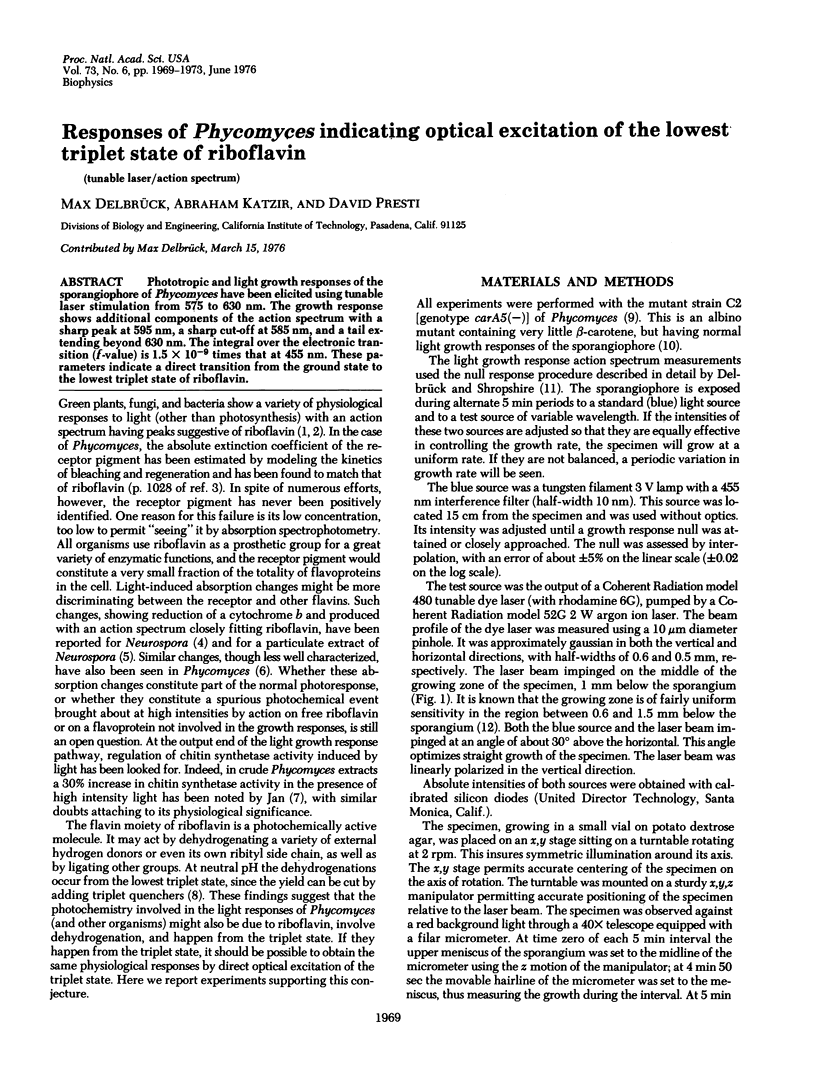
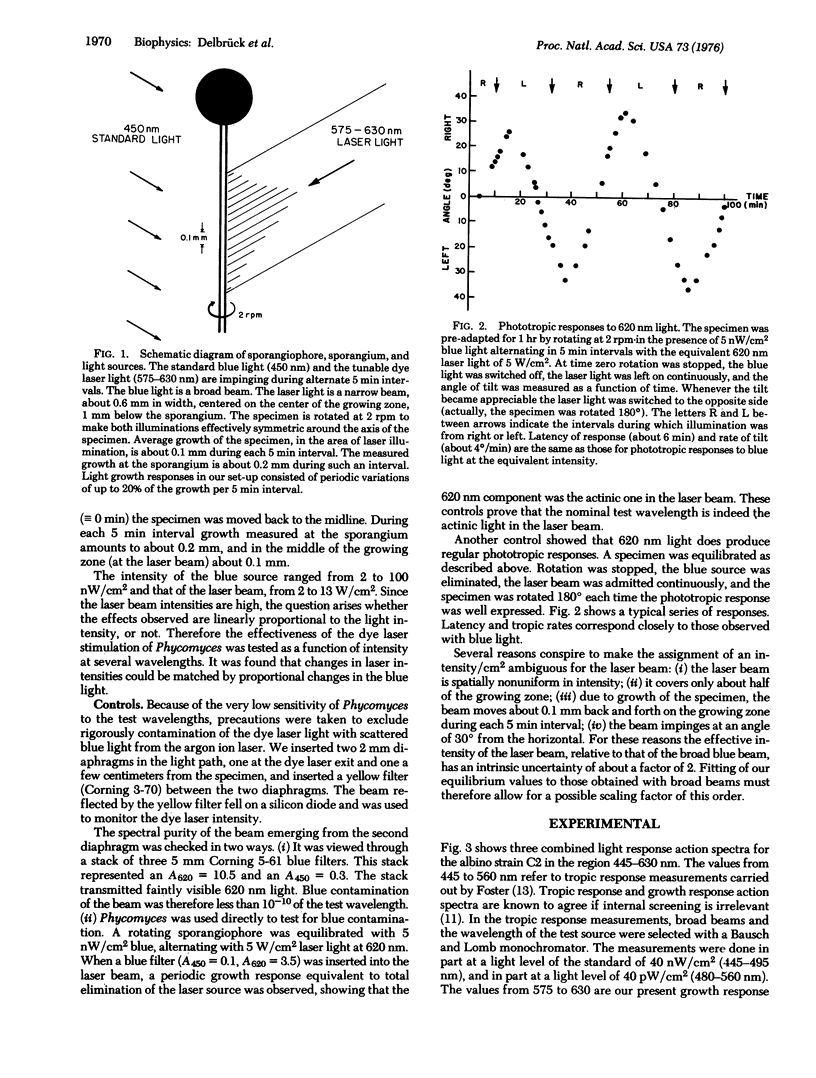
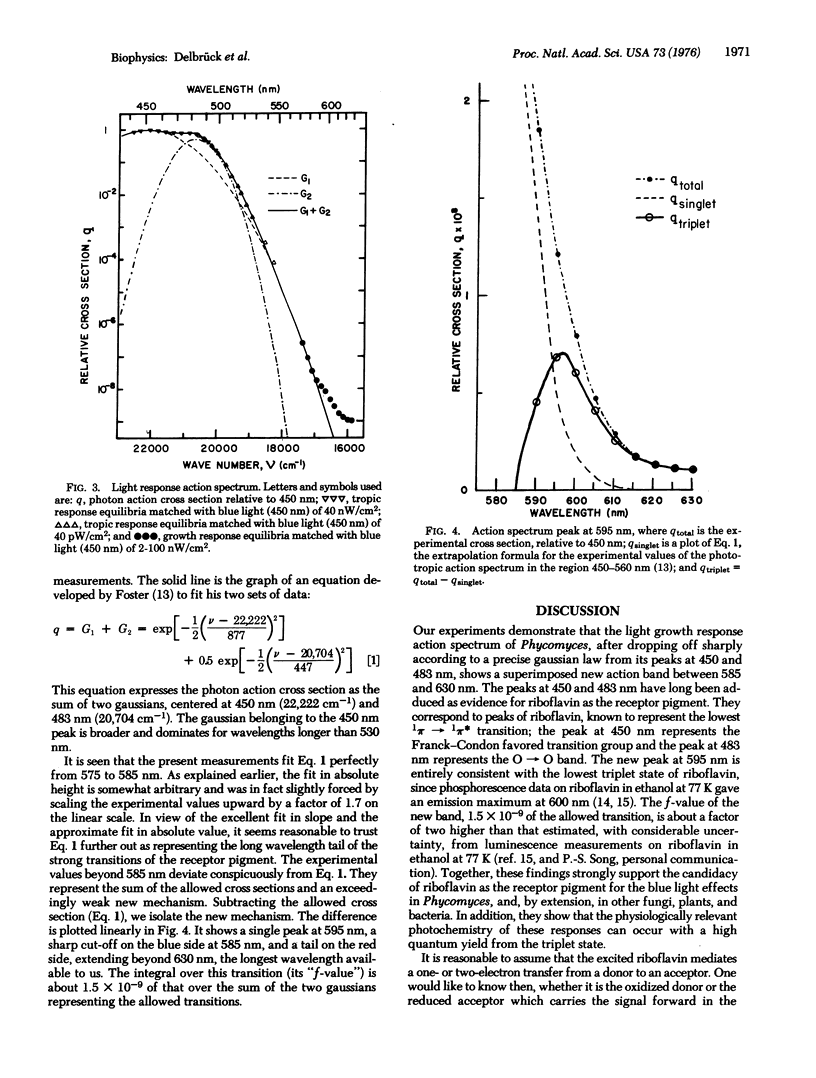
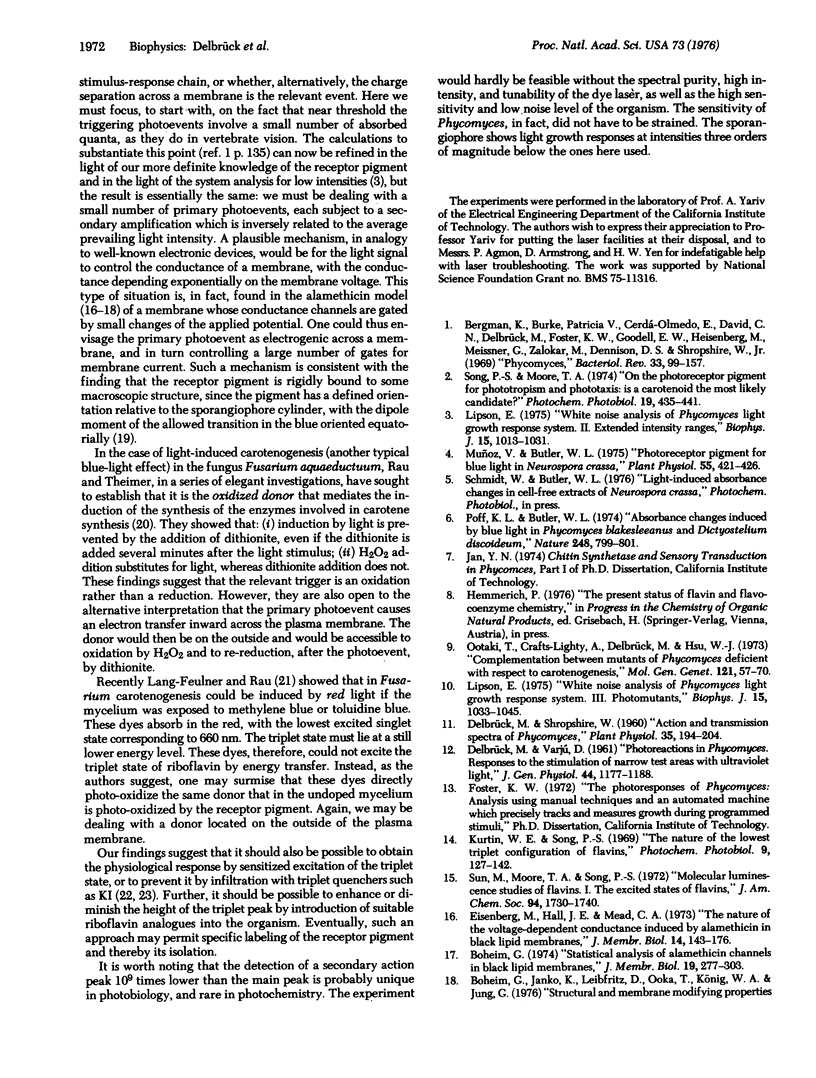
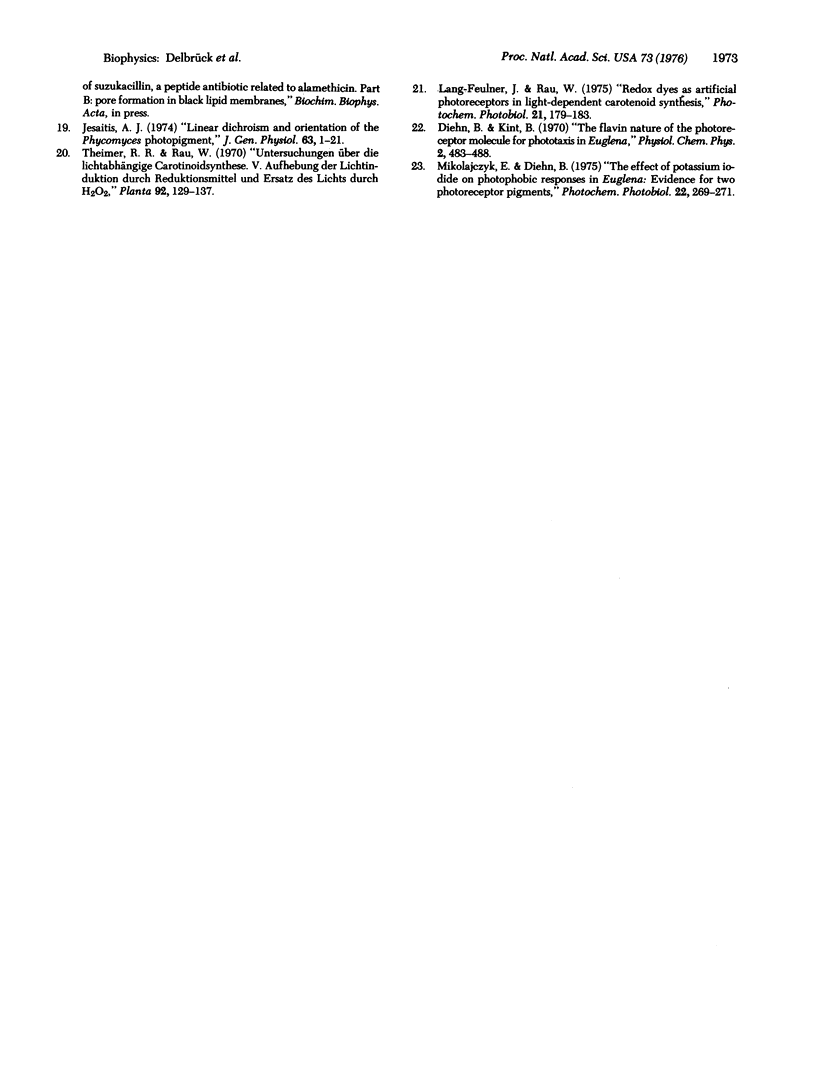
Selected References
These references are in PubMed. This may not be the complete list of references from this article.
- Bergman K., Burke P. V., Cerdá-Olmedo E., David C. N., Delbrück M., Foster K. W., Goodell E. W., Heisenberg M., Meissner G., Zalokar M. Phycomyces. Bacteriol Rev. 1969 Mar;33(1):99–157. doi: 10.1128/br.33.1.99-157.1969. [DOI] [PMC free article] [PubMed] [Google Scholar]
- Boheim G. Statistical analysis of alamethicin channels in black lipid membranes. J Membr Biol. 1974;19(3):277–303. doi: 10.1007/BF01869983. [DOI] [PubMed] [Google Scholar]
- Delbrück M., Shropshire W. Action and Transmission Spectra of Phycomyces. Plant Physiol. 1960 Mar;35(2):194–204. doi: 10.1104/pp.35.2.194. [DOI] [PMC free article] [PubMed] [Google Scholar]
- Eisenberg M., Hall J. E., Mead C. A. The nature of the voltage-dependent conductance induced by alamethicin in black lipid membranes. J Membr Biol. 1973 Dec 31;14(2):143–176. doi: 10.1007/BF01868075. [DOI] [PubMed] [Google Scholar]
- Jesaitis A. J. Linear dichroism and orientation of the Phycomyces photopigment. J Gen Physiol. 1974 Jan;63(1):1–21. doi: 10.1085/jgp.63.1.1. [DOI] [PMC free article] [PubMed] [Google Scholar]
- Kurtin W. E., Song P. S. The nature of the lowest triplet configuration of flavins. Photochem Photobiol. 1969 Feb;9(2):127–142. doi: 10.1111/j.1751-1097.1969.tb05917.x. [DOI] [PubMed] [Google Scholar]
- Lang-Feulner J., Rau W. Redox dyes as artificial photoreceptors in light-dependent carotenoid synthesis. Photochem Photobiol. 1975 Mar;21(3):179–183. doi: 10.1111/j.1751-1097.1975.tb06649.x. [DOI] [PubMed] [Google Scholar]
- Lipson E. D. White noise analysis of Phycomyces light growth response system. II. Extended intensity ranges. Biophys J. 1975 Oct;15(10):1013–1031. doi: 10.1016/S0006-3495(75)85880-2. [DOI] [PMC free article] [PubMed] [Google Scholar]
- Lipson E. D. White noise analysis of Phycomyces light growth response system. III. Photomutants. Biophys J. 1975 Oct;15(10):1033–1045. doi: 10.1016/S0006-3495(75)85881-4. [DOI] [PMC free article] [PubMed] [Google Scholar]
- Mikolajczyk E., Diehn B. The effect of potassium iodide on photophobic responses in Euglena: evidence for two photoreceptor pigments. Photochem Photobiol. 1975 Dec;22(6):269–271. doi: 10.1111/j.1751-1097.1975.tb06748.x. [DOI] [PubMed] [Google Scholar]
- Muñoz V., Butler W. L. Photoreceptor Pigment for Blue Light in Neurospora crassa. Plant Physiol. 1975 Feb;55(2):421–426. doi: 10.1104/pp.55.2.421. [DOI] [PMC free article] [PubMed] [Google Scholar]
- Ootaki T., Lighty A. C., Delbrück M., Hsu W. J. Complementation between mutants of Phycomyces deficient with respect to carotenogenesis. Mol Gen Genet. 1973;121(1):57–70. doi: 10.1007/BF00353693. [DOI] [PubMed] [Google Scholar]
- Poff K. L., Butler W. L. Absorbance changes induced by blue light in Phycomyces blakesleeanus and Dictyostelium discoideum. Nature. 1974 Apr 26;248(5451):799–801. doi: 10.1038/248799a0. [DOI] [PubMed] [Google Scholar]
- Song P. S., Moore T. A. On the photoreceptor pigment for phototropism and phototaxis: is a carotenoid the most likely candidate? Photochem Photobiol. 1974 Jun;19(6):435–441. doi: 10.1111/j.1751-1097.1974.tb06535.x. [DOI] [PubMed] [Google Scholar]
- Sun M., Moore T. A., Song P. S. Molecular luminescence studies of flavins. I. The excited states of flavins. J Am Chem Soc. 1972 Mar 8;94(5):1730–1740. doi: 10.1021/ja00760a052. [DOI] [PubMed] [Google Scholar]


